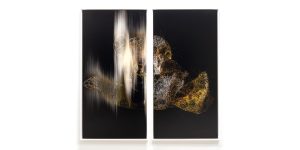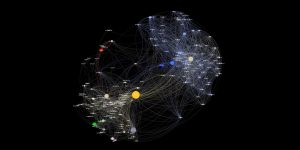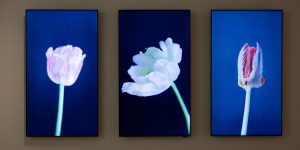Video

Ittrans_ctx
Ryoichi Kurokawa (JP)
Silent diptych video installation. It shows confrontational evolutions presented as laminar and turbulent flow: unidirectional and chaotic motion.

Critical Cartography: Unauthorized Blue Prints
Vladan Joler (RS)
This map is based on a 5-year internet monitoring process and over 400 different cases of violations documented and analyzed by the Share Foundation. Though different methods represented in this map are observed in our local context, we believe that they are also being used worldwide in similar forms. This map is an attempt to interconnect most of those issues into one map, one possible narrative, one possible reading of those processes.

Computers that Learn to Listen
Institute of Computational Perception, Johannes Kepler University (JKU) Linz (AT)
A set of 8 short demo videos on latest results from the world of scientific research: computers learn to listen to and “understand” music; an autonomous drum robot recognizes beat and rhythm; musical computer companions turn music pages for pianists, listen to orchestras, provide synchronized scores to concert audiences, and accompany soloists.

The Feline Project
Dagmar Dachauer (AT), Kilian Immervoll (AT)
Online cat content and robopets represent a deeply human yearning. Choreographer Dagmar Dachauer, together with video artist Kilian Immervoll, initiates a humorous and bewildering interaction between the ancient pet, human and robot through a hyper-detailed movement language.

Simulation
Jörg Brinkmann (DE)
The sound of a voice from a YouTube clip is analyzed with custom software and translated into servomotor movements. The mouth moves in synch with the video’s voice, which is realized with a bulldog clip that is attached to the lower lip. In the original video clip, a controversial and much-discussed shaman known as Little Grandmother delivers a monologue about religion, ego, and love reminiscent of a mantra.

Mosaic Virus
Anna Ridler (UK)
The video work Mosaic Virus is a contemporary version of a classic Dutch still life for the twenty-first century. The project is based on 10,000 tulip photographs which were used to train a model. An artificial intelligence (AI) thus generates an endless flood of images of imaginary tulips whose appearance is directly controlled by the current Bitcoin course. Anna Ridler focuses on current speculation in crypto currencies and draws historical parallels in this way to the “tulip mania” of the 1630s in the Netherlands and Europe. At that time, horrendous prices were paid for tulips that were striped. These stripes were caused by a disease – the so-called mosaic virus.


